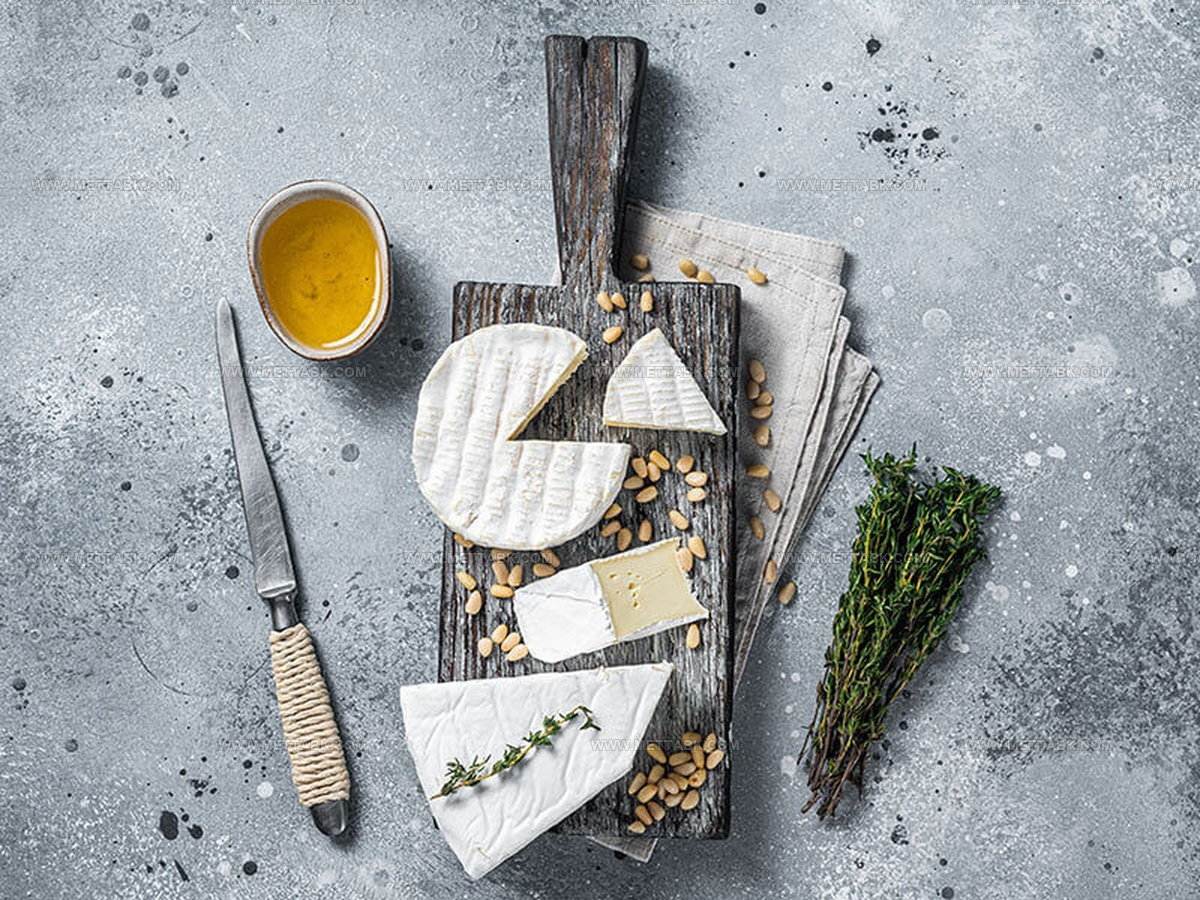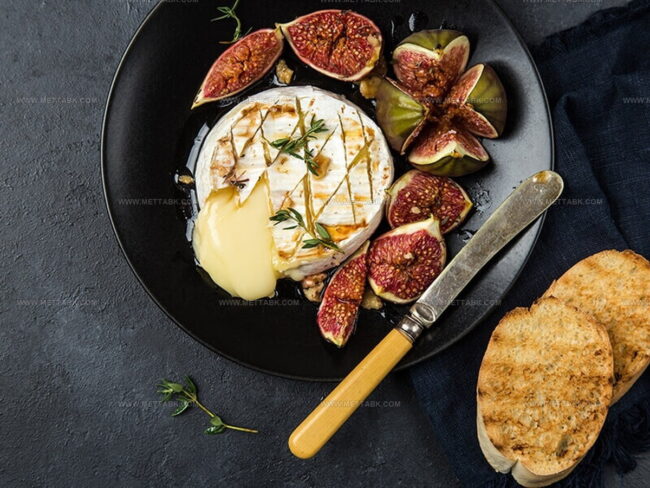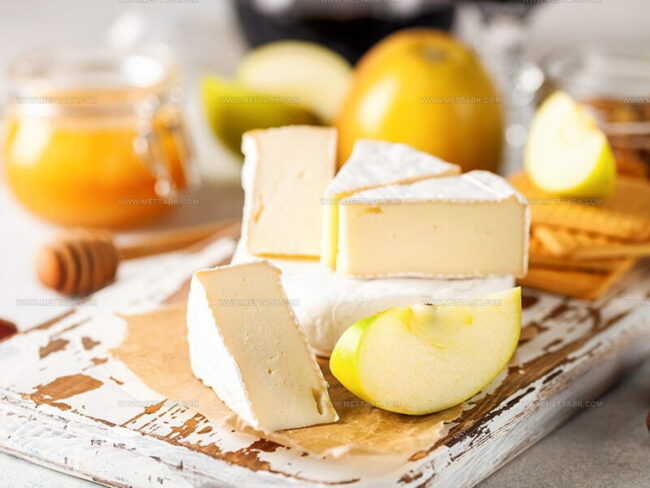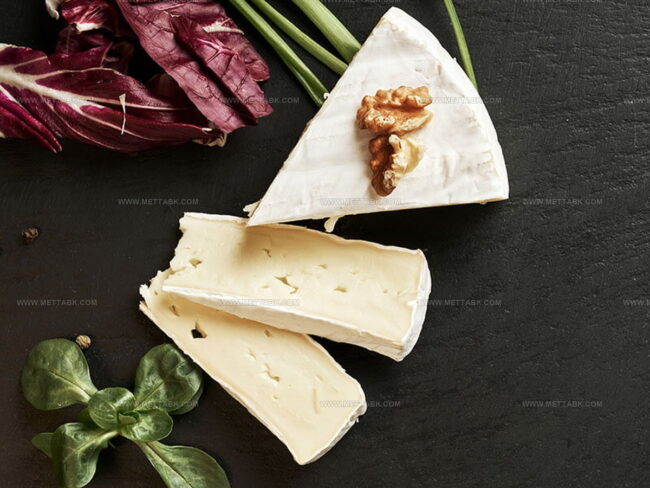Camembert or Brie: Which French Cheese Reigns?
Camembert and Brie stand as beloved French cheeses with devoted fans worldwide.
Creamy delights share similar appearances but offer distinct taste experiences for cheese enthusiasts.
Most people recognize their characteristic white rinds and soft centers that ooze deliciously when perfectly ripened.
The subtle differences between these dairy treasures come from traditional production methods dating back centuries.
French cuisine wouldn't be the same without these iconic contributions to cheese boards everywhere.
No cheese platter feels complete without at least one of these classics making an appearance.
The fascinating world of these two cheese varieties awaits you with more nuances and pairing suggestions in the sections ahead.
Exploring Camembert: A Delightful French Cheese
Camembert cheese boasts a creamy, soft texture made from pasteurized cow's milk. French cooks use this delicious dairy product in countless recipes - whether baked into pastries, melted on grills, stirred into soups, blended in sauces, or tossed with fresh salads.
Many shoppers appreciate that Camembert typically costs less than Brie at their local market. The flavor profile of Camembert packs a bit more punch compared to its cousin Brie, though both cheeses share enough similarities that you can swap them in most dishes without issue.
Due to these common characteristics, Camembert stands out as the ideal Brie replacement when you need an alternative in your cooking.
History Of Camembert
Marie Harel, a Norman farmer, created Camembert in Normandy, France back in 1791 after getting inspiration from a priest from Brie. Her recipe was based on an existing cheese from the Pays dAuge region, and later her daughter took over the family secrets to keep the business going.
Napoleon III gave the cheese his royal approval, helping Camembert spread quickly to other countries around the world. Today, people everywhere still love Camembert for its amazing flavor and top quality.
Guide to Creamy Brie Cheese
Brie is a beloved French soft-ripened cheese, often enjoyed alongside Camembert. Typically sold in large wheels, smaller “petit” versions are also common for easier serving.
While Brie has become popular worldwide with many varieties, only two authentic French types: Brie de Meaux and Brie de Melun, carry official certification. Known as the "King of Cheeses," Brie de Meaux is famed for its royal heritage and is a favorite at special occasions.
Brie de Melun, though smaller, offers a stronger flavor and aroma. The unique Penicillium mold used in its production gives Brie its signature creamy texture and distinctive taste.
Many cheese lovers enjoy pairing Brie with fresh fruits and a fine glass of wine.
History Of Brie Cheese
Brie cheese has its roots in early 7th century Normandy, France, specifically in the towns of Melun and Meaux near Paris. Monks in these French regions first crafted this delicious dairy delight, which has grown more exceptional through the centuries.
The rich taste and stellar reputation of Brie have earned it a permanent spot among top cheeses around the world. Many cheese lovers wonder about the story behind Brie's royal nickname - "King Of Cheeses."
Camembert or Brie: Unraveling The Differences
Exploring the differences between camembert and brie reveals several key distinctions worth noting. This table will show you all.
| Category | Brie | Camembert |
| Production & Fat | Made from whole/semi-skimmed milk; ~60% fat; milder flavor; aged ~4 weeks | Made from (un)pasteurized milk; ~45% fat; stronger flavor; aged ~4 weeks |
| Appearance | Larger wheel (9–15” diameter); rind on top only; whitish interior | Smaller wheel (4” diameter); rind covers sides; deeper yellow interior |
| Flavor & Aroma | Buttery, mild, earthy, salty finish | Milky, fruity, garlicky, earthy, more intense |
| Texture | Creamier and softer | Softer but denser |
| Shelf Life | Room temp: 4 hrs; fridge: 1–2 weeks opened, up to 2 months unopened; freezer: ~6 months (not ideal for soft Brie) | Room temp: 4 hrs; fridge: 1–2 weeks; freezer: 3–6 months (texture may suffer) |
| Nutrition & Benefits | Rich in B12, riboflavin, fiber; supports energy, bones, skin, heart | High in calcium, vitamins A & B5, protein; supports heart, bones, immunity |
| Best Pairings | Fruits, honey, crackers, bread, wine | Bread, nuts, fruits, cider, wine, beer, whiskey |
| Uses | Great melted in casseroles, sandwiches, pizzas | Perfect for baking, melting in various dishes |
Production & Fat
Brie is made from whole or semi-skimmed cow’s milk with added cream, resulting in about 60% milk fat. It has a milder flavor and is aged for about four weeks.
Camembert, on the other hand, is made from pasteurized or unpasteurized cow’s milk, contains roughly 45% milk fat, and develops a stronger, deeper flavor over a similar aging period.
Appearance
Brie typically comes in larger wheels measuring 9 to 15 inches in diameter, with a white rind that covers only the top surface. Its interior is usually whitish and can be firmer, especially in American versions.
Camembert wheels are smaller, around 4 inches wide, with a rind that envelops the entire cheese, including the sides. Its interior is a deeper yellow color.
Flavor & Aroma
Camembert delivers a distinctive milky, fruity profile with notes of garlicky scent, foraged mushroom, and caramelized butter undertones. Many people notice its grassy quality and slightly earthier character compared to its relative, Brie.
The flavor experience of Brie cheese stands out for its buttery, mushroom-like essence combined with earthy notes and a pleasant salty finish. Most cheese enthusiasts agree that Brie offers a milder taste and smell than its more robust Camembert counterpart.
Room temperature brings out the best flavors in both varieties, allowing their complex profiles to fully develop.
Texture
Brie offers a creamier experience while Camembert has a slightly denser feel when you taste it. This texture variation relates directly to their composition, as Brie contains more milk fat than its Camembert cousin.
Despite these small differences, both cheeses deliver that wonderful melt-in-your-mouth sensation that makes them such popular choices for cheese lovers everywhere.
Shelf-life
Both Brie and Camembert last about four hours at room temperature. In the fridge, opened Brie can stay fresh for 1–2 weeks and unopened up to two months, though freezing soft Brie is not recommended.
Camembert keeps for 1–2 weeks refrigerated and can be frozen for 3–6 months, though freezing may affect texture and flavor.
Nutritional Value & Health Benefits
Brie is rich in vitamin B12, riboflavin, fiber, and calories, supporting energy production, bone health, skin, and heart function. Camembert provides high levels of calcium, vitamins A and B5, protein, and beneficial bacteria, which contribute to heart health, immune support, and digestion.
Best Uses And Companions
Brie melts beautifully and works well in casseroles, sandwiches, pizzas, and flatbreads. Camembert is excellent for baking and melting, adding creamy richness to a variety of dishes.
Brie pairs wonderfully with fruits like apples and grapes, honey, crackers, bread, and various wines. Camembert complements crusty bread, nuts, fruits, Normandy cider, wine, beer, and whiskey, enhancing its rich flavors.
Swapping Camembert for Brie and Vice Versa
Swapping Camembert and Brie is usually easy since both are soft, French cow’s milk cheeses with edible rinds. Brie is milder, creamier, and larger, making it great for cheese boards and recipes needing a smooth texture.
Camembert is smaller with a stronger, earthier flavor and denser texture, ideal for dishes that benefit from bold cheese taste.
When substituting, expect slight differences in flavor and texture; choose Brie for mild creaminess and Camembert for a richer, more intense flavor.
Adjust seasonings to balance the swap.
The Best Camembert And Brie Cheese
Here are some of the top-rated Camembert and Brie cheeses, recognized for their quality and flavor:
Top Camembert Cheeses
Top Brie Cheeses
Mouthwatering Ways to Enjoy Creamy Camembert & Brie
Brie and Camembert pair beautifully with many delicious foods that enhance their creamy texture and rich flavor. My favorite ways to enjoy these cheeses include serving them on crusty bread with honey drizzle, adding them to warm pasta dishes, or placing them at the center of a well-arranged cheese board with nuts and fruits.
These cheeses also taste amazing when baked until slightly melted and topped with jam or herbs. For casual meals, they can be included in sandwiches or melted into omelets for extra richness.
Their mild nature makes them perfect partners for both sweet and savory accompaniments, giving you plenty of options to experiment with in your kitchen.
Got Questions? We’ve Got Solutions
1. When should I serve camembert versus brie?
Brie is perfect for casual gatherings and pairs well with fruits and crackers. Camembert works better for hearty wine tastings and rustic bread - it has a stronger flavor that stands up to robust pairings.
2. Can I substitute one for the other in recipes?
Yes, you can swap them in most recipes, but expect a stronger flavor with camembert. Adjust quantities slightly as camembert can overpower delicate dishes where brie would be more subtle.
3. How long do these cheeses last in the refrigerator?
Both last about 1-2 weeks when properly stored in wax paper or cheese paper. After opening, consume camembert slightly faster as it tends to ripen more quickly than brie.
4. Are there significant nutritional differences?
They're nutritionally similar, but camembert typically contains slightly more fat and protein per serving. Both are good sources of calcium and vitamin B12.






Nate Harper
Founder & Recipe Curator
Expertise
Single-Recipe Development, Farm-to-Table Cooking, Seasonal Menu Planning, Culinary Storytelling, Home Kitchen Innovation
Education
Cascade Culinary Institute – Central Oregon Community College
Certificate in Culinary Arts
Focus: Farm-to-table cuisine, sustainable cooking practices, and seasonal recipe creation.
Nate studied under experienced chefs who emphasized local sourcing, minimal waste, and building recipes from fresh, simple ingredients.
Nate Harper is the founder and creative force behind Make, Take, Bake. Raised in the wild beauty of Oregon’s high desert, Nate grew up surrounded by family gardens, farmers’ markets, and home kitchens that celebrated the seasons.
His early love for simple, honest food evolved into a professional passion when he attended Cascade Culinary Institute, where he sharpened his skills in creating recipes that are sustainable, satisfying, and made for everyday life.
Nate’s goal is to make cooking feel accessible, free of fuss, and full of flavor. He believes a single, thoughtfully built dish can stand alone, and sometimes even steal the show.